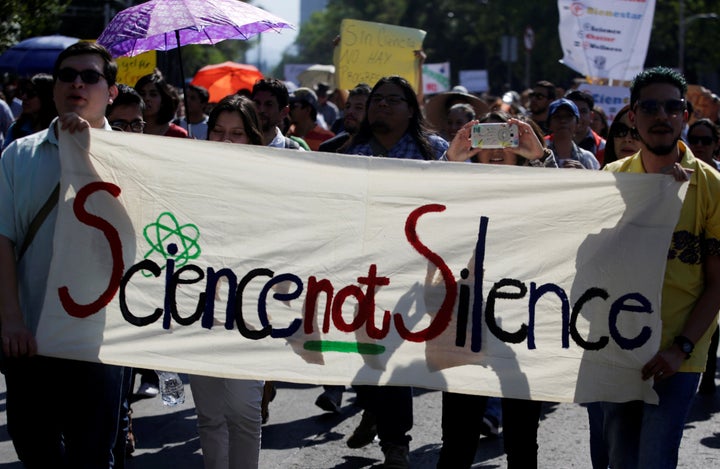
I was raised in La Verne, the former orange capital of California into a traditional Mexican-American household with deep indigenous roots. My father was an immigrant; my mother was born in the United States. They both went to segregated schools in the 1930s. Until I was two, my parents were farm workers and traveled around southern California picking citrus. After that, my father labored in a factory. Most of my extended family lived within a two-block radius from my house, including my great-grandmother, who was a curandera (healer). Her yard was a traditional medicine garden and it was there that my scientific curiosity took root. Like most young scientists, I had an insatiable need to figure out how things work. Once, I decimated my father’s rose garden, dissecting the flowers from petal to stamen! Today, I’m a professor of plant biology at California State University, Northridge (CSUN).
“I would not have been able to accomplish my dream of becoming a scientist without the emerging support system for minorities in science that nurtured my development.”
If it weren’t for the opportunities granted through California Grants and Pomona College need blind admissions the financial aid Pomona provided, I would not have been able to attend college and be the first in my family to earn a college degree. The Ford Foundation Graduate fellowship to diversify the professoriate, made it possible for me to attend graduate school and later become the first Chicana to earn a PhD in botany at UC Berkeley. I would not have been able to accomplish my dream of becoming a scientist without the help of my family, and an emerging support system for minorities in science that nurtured my development and my mentors which led me to become the first woman president of the organization I helped establish, Society for Advancement of Chicanos/Hispanics and Native Americans in Science (SACNAS).
On Sunday, Earth Day, I joined thousands in the March for Science Los Angeles to ensure that others can be the first to blaze a trail in their communities, in their families, and in the field of science. I marched to ensure that future generations will be able to make discoveries that benefit us all. When I marched for science, I marched in support of a budget that prioritizes public education, basic scientific research and discovery, and environmental stewardship. The recently proposed budget to Congress deeply threatens the future of science, education, public health, and our environment.
“Advances in science do not magically appear: They are reliant upon well-supported public education.”
Advances in science do not magically appear: They are reliant upon well-supported public education, an excellent system of higher education, opportunities for advanced degrees, and federally-funded scientific training programs that support minority career development such as Maximizing Access to Research Careers (MARC) and the Research Initiative for Scientific Enhancement (RISE), programs funded by the National Institute of General Medical Sciences (NIGMS).
It is nearly impossible to contemplate where we would be as a species without scientific inquiry and discovery. We live in a society where science education and paths to scientific discovery are not accessible to everyone. Ostensibly, that is like playing in the World Series and only fielding four players rather than nine and still expecting to win! We cannot sit idly by if we are to progress as a nation, in a country that is becoming increasingly diverse in composition.
At CSU Northridge, the MARC and RISE programs are among the most successful in the nation for mentoring students to enable them to enter competitive PhD programs. While the overall graduation rate at CSUN is about 50 percent, students in the MARC and RISE programs graduate at rates approaching 99 percent and go on to do extraordinary things.
Inclusivity in science means that underrepresented groups ― young men and women of color and all women ― have access to mentors, role-models, a network of peers, research opportunities and professional development that go beyond a singular institution such as the supportive environment of CSUN. SACNAS, which also relies heavily on federal funding, has over 115 student and professional chapters nationwide and provides a broad and supportive network for those pursuing STEM educations and careers. Together, with other scientific societies and STEM diversity organizations, there is a powerful emerging network and support system for those most underrepresented in STEM. These organizations along with federally funded training programs must be supported to develop an inclusive, productive, and globally competitive STEM workforce.
We must not jeopardize the future of our species and the planet by short-sighted, politically expedient acts. We must support science and future scientists from all corners of our country―those young discoverers on the Navajo nation, in East Los Angeles, in Ferguson, who are disassembling old computers to find out how they work, constructing solar power batteries out of household supplies, and wreaking havoc in their father’s gardens. When I marched for science on April 22, I marched for our future.